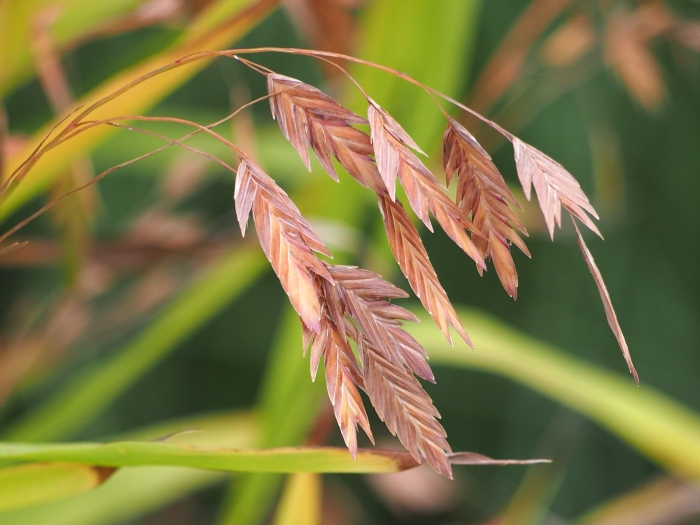Northern Sea Oats
(Chasmanthium latifolium)
Northern Sea Oats (Chasmanthium latifolium)
/
/

Agnieszka Kwiecień, Nova
CC BY-SA 4.0

































































































Estimated Native Range
Summary
Northern Sea Oats is valued for its adaptability to a range of garden settings, including shaded gardens where few grasses succeed. It is often used for naturalistic plantings, erosion control, and as an accent in borders or along water features. While it prefers moist, well-drained soils, it is tolerant of a variety of soil types, including acidic sands, loams, and clays. It is recommended for USDA hardiness zones 3–9. Gardeners should be aware that it can self-seed and become invasive in some conditions.CC BY-SA 4.0
Plant Description
- Plant Type: Grass
- Height: 2-5 feet
- Width: 1-2.5 feet
- Growth Rate: Moderate
- Flower Color: N/A
- Flowering Season: Summer, Fall
- Leaf Retention: Deciduous
Growth Requirements
- Sun: Full Sun, Part Shade
- Water: Medium
- Drainage: Fast, Medium, Slow
Common Uses
Bird Garden, Border Plant, Butterfly Garden, Deer Resistant, Drought Tolerant, Edible*Disclaimer: Easyscape's listed plant edibility is for informational use. Always verify the safety and proper identification of any plant before consumption., Erosion Control, Groundcover, Low Maintenance, Potted Plant, Rock Garden, Salt Tolerant, Street Planting
Natural Habitat
Riparian areas, open woodlands, and moist slopes in the Eastern and Midwest U.S. and Northeastern Mexico
Other Names
Common Names: Indian Wood Oats , Broad-Leaved Chasmanthium , Northern Sea Oats , Wild Oats , River Oats
Scientific Names: Chasmanthium latifolium , Uniola latifolia
GBIF Accepted Name: Chasmanthium latifolium (Michx.) H.O.Yates